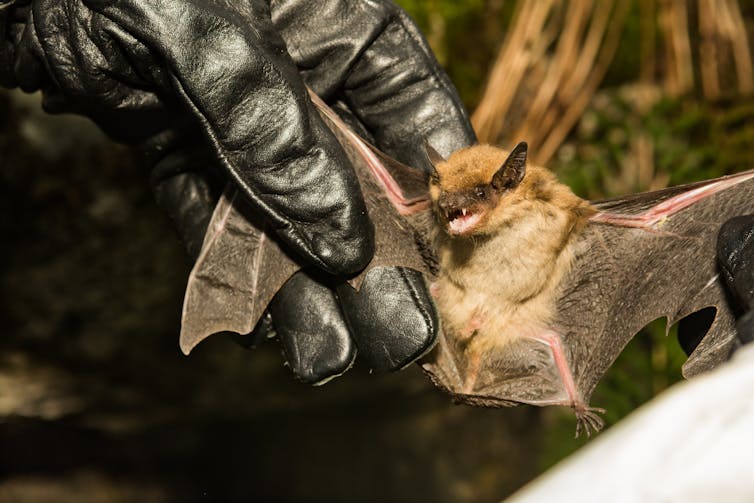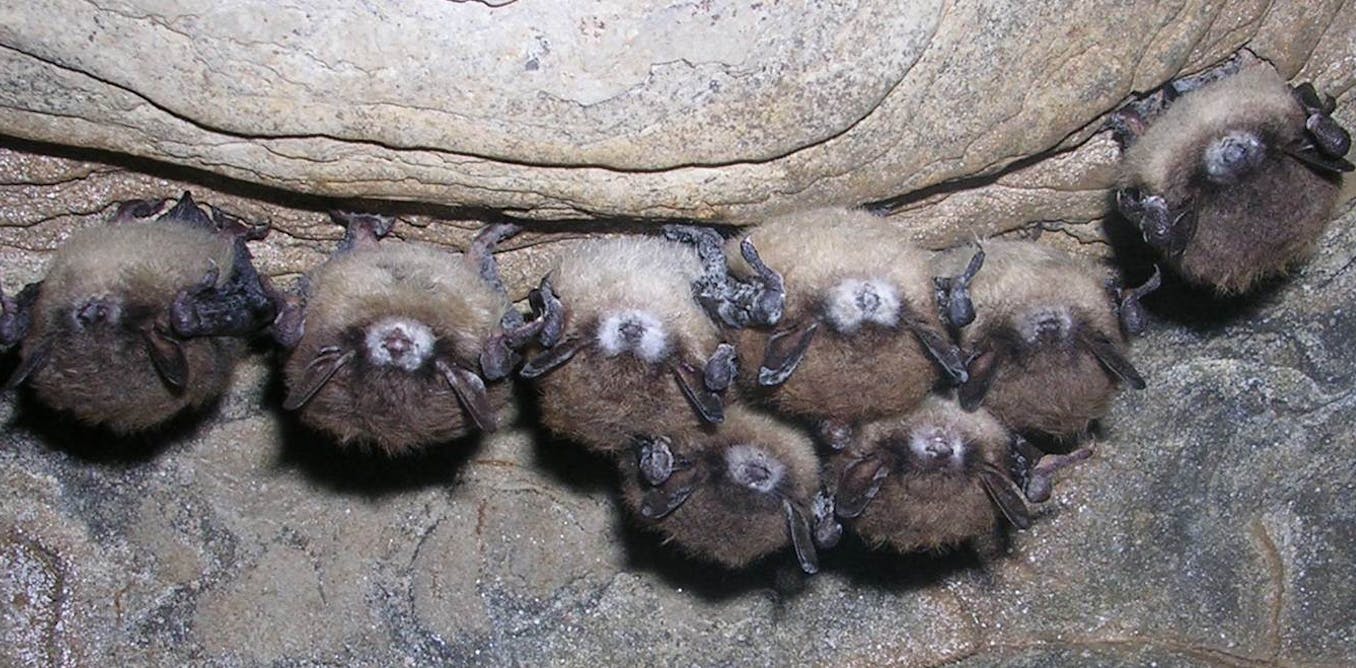[ad_1]
A dangerous fungus has been sweeping across North America with devastating consequences. In the past decade, between 5m and 7m bats in the US and Canada have been wiped out as a result of the fungal disease known as white nose syndrome, which alters their behaviour in potentially deadly ways. But the latest research shows there might be hope for researchers trying to battle the disease, following the discovery that UV light appears to destroy the fungus’s DNA.
White nose syndrome is caused by the fungus Pseudogymnoascus destructans, which grows on the bats’ muzzles (hence the name) and other hairless body parts including wings, and causes skin lesions. P. destructans is psychrophilic, meaning it thrives in cold temperatures between 4°C and 20°C. This means it affects bats during hibernation.
The itchy, painful lesions cause infected bats to repeatedly wake from hibernation, leaving them confused and causing them to display highly unusual behavior, such as flying outside during daylight in nearly freezing temperatures. The cold, lack of food and abnormal activity leads to bats depleting their winter fat reserves, and starving, dehydrating or freezing to death. As a result, the disease can kill between 90% and 100% of bats in affected hibernating colonies.
Out of the 47 bat species native to the US and Canada, over half rely on hibernation for survival. Nine of these species (including two endangered and one threatened) already show symptoms of white nose syndrome. P. destructans has also been found in another six species (including one endangered) that don’t yet show symptoms. The little brown bat (Myotis lucifugus), once the most common bat in North America, is now predicted to face regional extinction.
Bats normally live a long time and produce only a single pup each year, so affected species are unlikely to recover quickly. Not only is this bad for biodiversity, but it could also have a serious economic impact on humans. In temperate regions, bats eat up to 600 insects a night and so provide a vital pest-control service for North American farmers, effectively worth US$3.7 billion a year.
How did this bat-astrophe come about?
P. destructans has probably co-existed with bats in Eurasia for millions of years. As a result, these bats have evolved defences against the fungus. So in this part of the world, despite the occasional mild outbreak of white nose syndrome, the disease doesn’t significantly impact entire groups of bats. But when P. destructans was introduced to the previously unexposed American bats, the effects were disastrous.
White nose syndrome was discovered in North America in 2006. We know that the fungus was most likely spread by human activity because the North American fungus is almost genetically identical to some of the samples found in Europe. Also, bats don’t migrate between the two continents and some of the distances between contaminated caves in the US are longer than the flying range of affected bats. On top of that, the first reports of white nose syndrome came from a popular tourist cave near Albany, New York. So the fungus probably spread via contaminated clothing and caving equipment from tourists visiting affected areas.

Shutterstock
Since then, white nose syndrome has become one of the most severe wildlife diseases ever recorded. Yet there may literally be a light at the end of the tunnel. A research team from the US Forest Service has discovered that P. destructans is extremely sensitive to ultra-violet light, particularly to UV-C light that kills germs but doesn’t cause skin cancer. They found that moderate doses of UV-C light killed over 99% of the fungus, and that even low doses killed 85%.
The effect is so potent because UV light destroys the fungus’s DNA, and, unlike related fungi, P. destructans can’t repair the damage. Further tests are on the way to check whether UV light causes any damage to the bats themselves. But the fact that UV-C light has already been used in treatments of other fungal infections in mammals means the discovery is very promising.
Managing wildlife diseases can be difficult and expensive. Think of how hard it would be to apply fungicide skin cream to tens of thousands of bats hanging from the top of a cave. But shining a simple hand-held UV-C light source on them would be much easier. So this research could have huge implications for protecting North American bats.
[ad_2]
